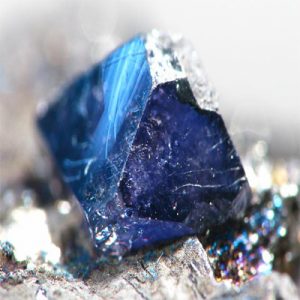Scorodite: Gemstones Information
Scorodite is a fascinating mineral with a rich history and diverse properties that make it valuable both scientifically and industrially. As an iron arsenate mineral, scorodite exhibits unique characteristics and has various applications in mineralogy, mining, and environmental science. Below is a detailed exploration of scorodite, covering its properties, occurrences, uses, and significance.
Properties:
Scorodite is an iron arsenate mineral with the chemical formula FeAsO₄·2H₂O. It belongs to the monoclinic crystal system and typically forms prismatic or tabular crystals with a bladed or acicular habit. The mineral can vary in color, ranging from yellow, yellow-green, green, blue-green, to deep blue, depending on impurities and crystal defects. Scorodite has a vitreous to adamantine luster and a Mohs hardness of 3.5 to 4. It is transparent to translucent and often exhibits excellent cleavage.
Occurrences:
Scorodite occurs as a secondary mineral in oxidized hydrothermal veins and deposits associated with arsenic-rich environments. It is commonly found in association with other arsenate minerals, sulfides, and oxides, as well as in mine tailings, where it forms as a product of the oxidation of primary sulfide minerals containing arsenic. Major deposits of scorodite have been discovered in regions such as Cornwall (United Kingdom), Chile, Germany, Mexico, Peru, and the United States.
Uses:
Mineral Specimens: Scorodite’s attractive crystal forms and vibrant colors make it a sought-after collector’s mineral. Fine-quality scorodite specimens with well-defined crystals and intense colors are highly prized by mineral collectors and enthusiasts for display in collections and museums.
Arsenic Remediation: Scorodite has significant importance in environmental science and mining due to its ability to sequester arsenic from contaminated water and soil. It forms as a secondary mineral during the oxidative weathering of arsenic-bearing sulfide minerals, effectively immobilizing arsenic and reducing its mobility in the environment. This property makes scorodite a potential candidate for use in arsenic remediation technologies.
Arsenic Recovery: In mining operations, scorodite can be formed as a byproduct during the treatment of arsenic-rich mine tailings or acidic drainage waters. Under controlled conditions, scorodite precipitation can be induced, allowing for the recovery and safe disposal of arsenic from mining effluents.
Significance:
Scorodite holds significance in both scientific research and practical applications related to mineralogy, environmental science, and mining. Its formation processes provide valuable insights into the geochemical cycling of arsenic in natural environments and the mechanisms of arsenic immobilization in mine waste materials. Additionally, scorodite’s potential use in arsenic remediation technologies offers promising solutions for addressing environmental contamination and mitigating the risks associated with arsenic exposure.
Conclusion:
In conclusion, scorodite is a versatile mineral with diverse properties and applications in mineralogy, environmental science, and mining. Its unique crystal forms, vibrant colors, and significance in arsenic remediation make it a valuable asset in both scientific research and practical applications. As awareness of environmental issues and the importance of sustainable mining practices grows, scorodite remains a noteworthy mineral with the potential to contribute to the management and remediation of arsenic-contaminated environments.





